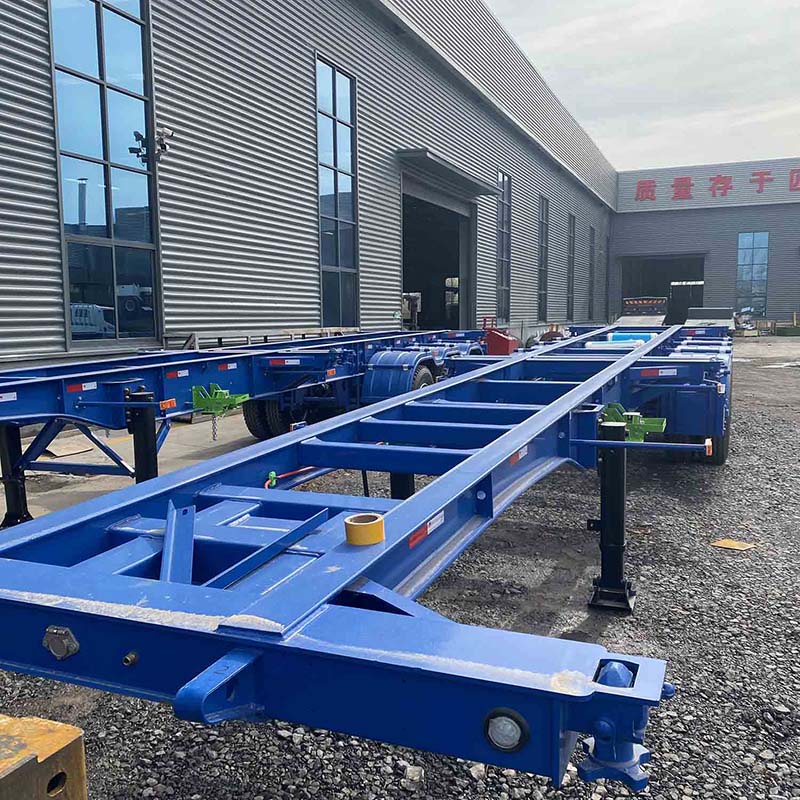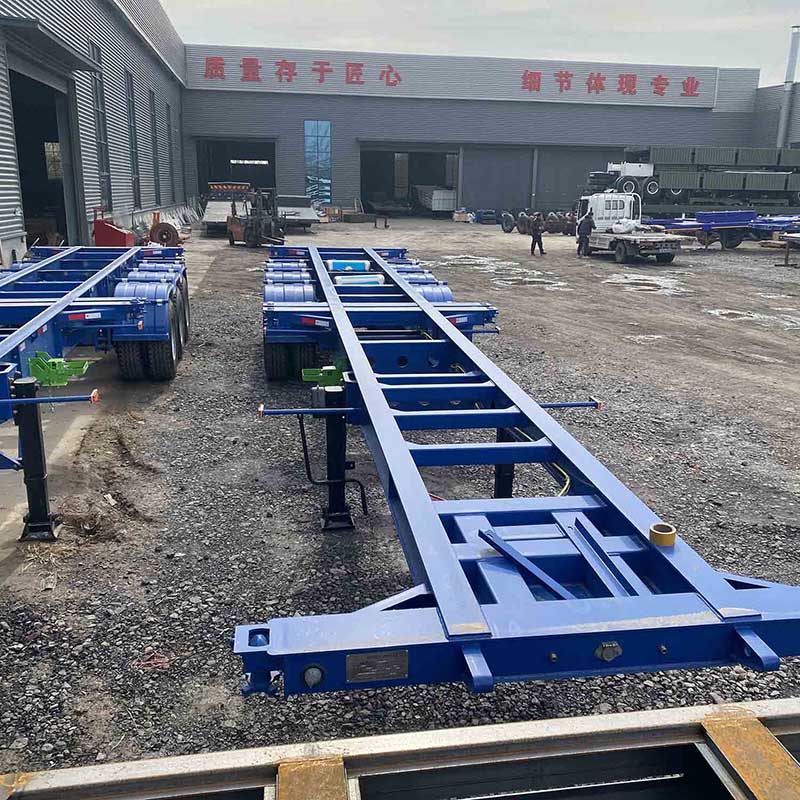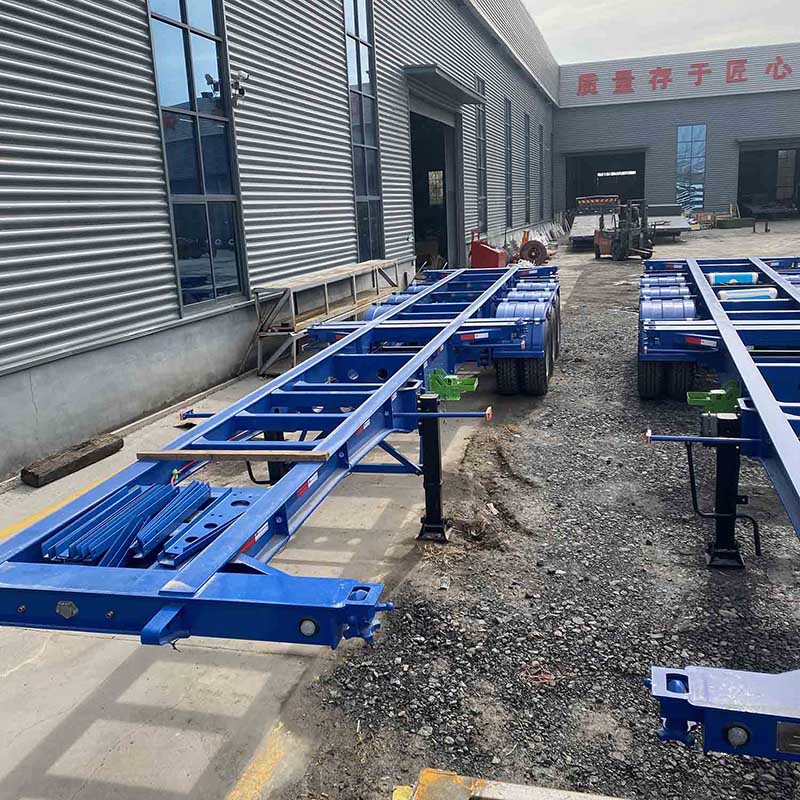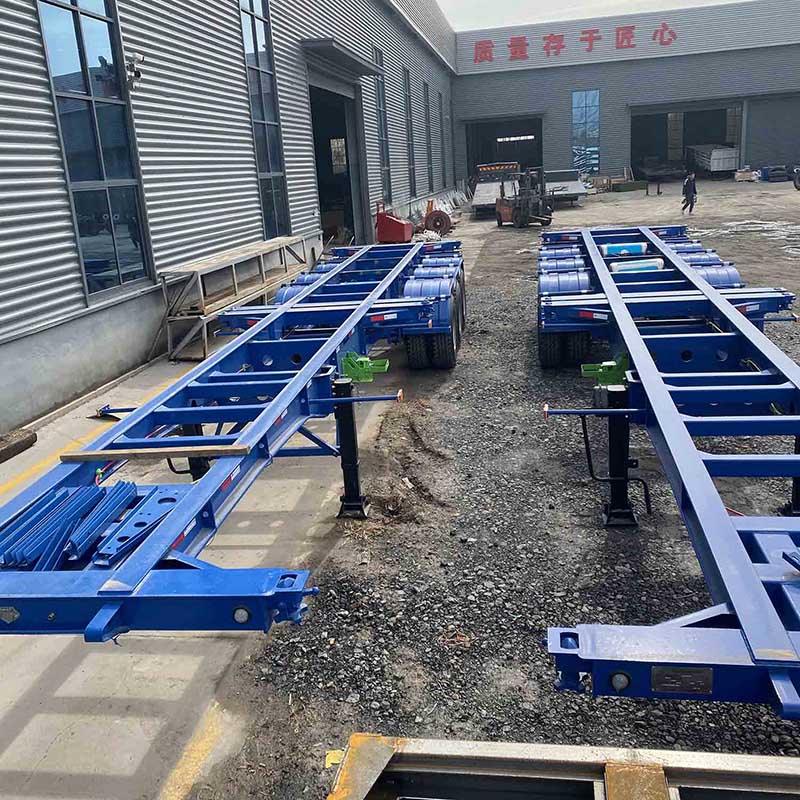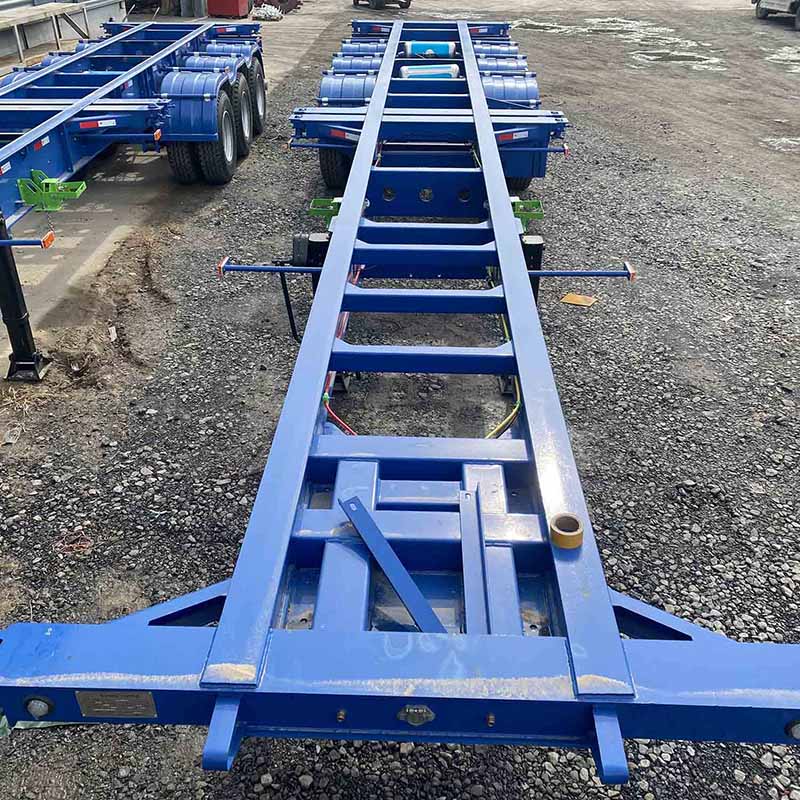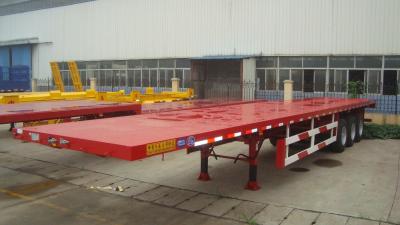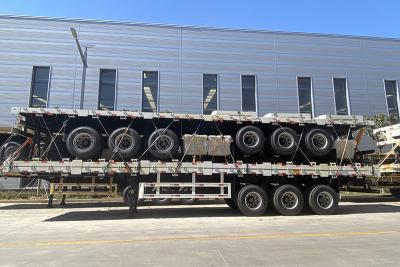Trailer Skeleton
A trailer skeleton, also commonly referred to as a flatbed trailer chassis, is the basic structure of a trailer without any components like walls or a roof. It is essentially a framework consisting of crossmembers, longitudinal beams, and a landing gear or kingpin at the front to attach it to the tractor unit. The trailer skeleton is designed to support weighty cargo in transit.
Product Name: Trailer Skeleton
Price:Direct factory. Order now and get 10% off.
Different Parameters, Different Price
Contact us for more infos. Whatsapp/Phone Number: +86 18615520624
Email: sales@vehiclemaster.com
Trailer Skeleton
Introduction
A trailer skeleton, also known as a flatbed trailer chassis, is a versatile and practical trailer type with a simple structure that is designed to transport a wide rangeof goods and materials. The trailer skeleton is essentially a frame without any walls or a roof, allowing for easy loading and unloading of cargo from the top or sides of the trailer.
Flatbed trailer chassis are well-suited to hauling unusually shaped or oversized cargo that would not fit inside traditional trailer types, such as shipping containers, construction materials, and oversized machinery. The absence of walls and a roof on the trailer skeleton provides the flexibility necessary to accommodate bulky cargo.
The flatbed trailer chassis design provides a cost-effective solution for cargo transportation as it is less expensive to manufacture, operate, and maintain than other trailer types. Furthermore, it has a high weight-load capacity that allows for the transport of heavy equipment or goods. The crossmember and longitudinal beam construction also ensures it offers high load stability to minimise the risk of cargo falling from the trailer in transit.
Flatbed trailers have become increasingly popular in the transportation sector because they can be easily customized to suit the needs of different clients. Segments of the trailer can be modified to handle varying lengths of cargo and the trailer skeleton can accommodate cargo of different shapes and sizes.
Overall, the trailer skeleton is a practical and efficient transportation solution for a wide range of goods and materials. Its versatility in transporting oversized and irregularly shaped containers, equipment, and cargo, coupled with its cost-effectiveness and customizability, demonstrates why it's a popular choice in the transportation industry.
Parameter
Here is the parameter of a typical trailer skeleton:
Dimensions
Length: 40-53 feet
Width: 96-102 inches
Height: 60-72 inches
Weight
Max Gross Vehicle Weight (GVWR): 80,000 lbs (36,287 kg)
Tare Weight: 8,000 lbs (3,629 kg)
Payload capacity: 72,000 lbs (32,658 kg)
Frame Construction
Main beams: High tensile strength steel
Crossmembers: Steel I-beam type spaced at 12 to 16 inches
Floor Construction
Width of the floor: 48-96 inches
Material: wood and/or aluminum/steel decking depending on preference
Thickness of the floorboards: 1.125 to 1.5 inches
Floor Fasteners: Welded bolts on the side rails or 'J' hooks depending on preference
Suspension System
Type: Air-ride or mechanical spring suspension
Number of Axles: 2 to 3 depending on the length of the trailer
Suspension capacity: 20,000 to 25,000 lbs
Brakes: Drum brakes equipped with a brake controller kit. Some models may have a disc brake with the Anti-lock Brake System (ABS) feature.
Tire and Wheel
Tire Size: 22.5 inches
Wheel Material: Steel or aluminum depending on preference
Number of Tires: 8 or 12 depending on the number of axles
Accessories
Toolboxes: 1 or 2 toolboxes mounted on the deck
Chain tie-down: 14-16 sets of chains depending on the length of the trailer and the customer's preference.
Winches: Between 8 - 12 winches with straps on the side rails of the chassis
Lighting: LED lamps with reflectors and clearance/marker lights
This parameter is subject to modification based on customer or regulatory requirements. The above is a guide to provide an idea of the specifications and features of a typical trailer skeleton.
Advantages
Trailer skeleton, also known as flatbed trailers, are a popular choice in the transportation industry for a variety of good reasons. Some of the advantages of trailer skeletons include:
Versatility: The trailer skeleton is well suited to transporting a wide range of goods due to its lack of walls and roof, making it ideal for carrying oversized, heavyweight loads like shipping containers, construction materials, and machinery.
Flexibility: The trailer skeleton can be easily customized to meet the customer's exact requirements, with different sizes and designs available to accommodate a variety of cargo loads.
Cost-Effective: Trailer skeletons are a cost-effective solution for transporting goods, as they are less expensive to manufacture, operate, and maintain than other types of trailers.
Load Stability: Trailer skeletons offer a high level of load stability, thanks to their crossmember, longitudinal beams, and landing gears at the front of the trailer, helping to reduce the risk of cargo shifting or falling off during transportation.
Efficient Loading and Unloading: The trailer skeleton's open design allows for easy loading and unloading of cargo and faster, more efficient operations. This can also reduce the risk of damage to the cargo, as it can be more easily secured and protected during transportation.
Adaptable: Trailer skeletons are suitable for various types of road conditions and can be used for transporting goods in urban, rural, and off-road areas.
Compliance: Trailer skeletons are compliant with various transportation regulations that specify the maximum height, width, and length of a trailer, as well as load limits.
Overall, the versatility, flexibility, cost-effectiveness, and adaptability that trailer skeletons provide make them an excellent transportation solution for a wide range of goods and materials. Their unique design and construction ensure a high level of safety and compliance while providing efficient and effective transportation.
Features
Here are some key product features of a trailer skeleton:
Material: Made of high-strength steel Q345B, minimizing the trailer's weight while maintaining strength and durability.
Braking system: Equipped with advanced ABS braking system, ensuring effective and safe braking.
Suspension system: Air suspension with shock absorbers provides a smooth ride, reduces wear and tear on cargo and improves driver comfort.
Loading capacity: Able to transport heavy loads with a capacity of up to 30 tons.
Detachable design: modular structure and detachable parts simplify repair and maintenance work.
Lashing points: Equipped with a number of cargo tie-down points, to help secure cargo safely and efficiently.
Rear underrun protection: Ensuring road safety and legal compliance with rear underrun protection device.
Unloading device: Optional hydraulic or mechanical lifting devices ease the unloading of cargo.
Customization options: The ability to customize the trailer's specification to meet customer's specific requirements.
Related News
Submitted successfully
We will contact you as soon as possible
